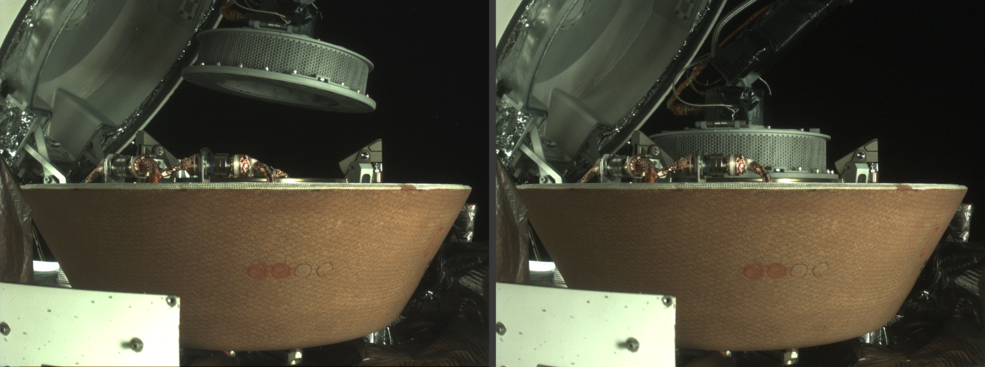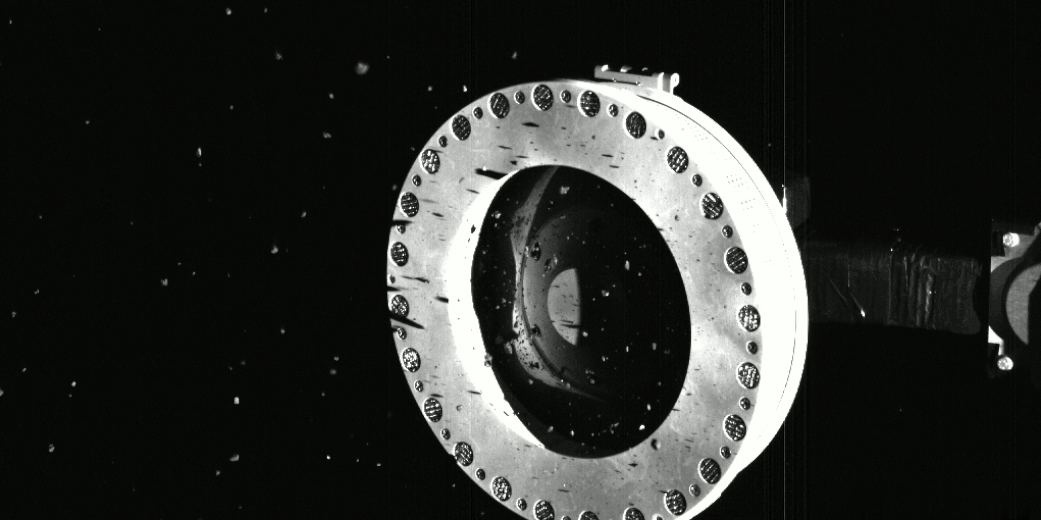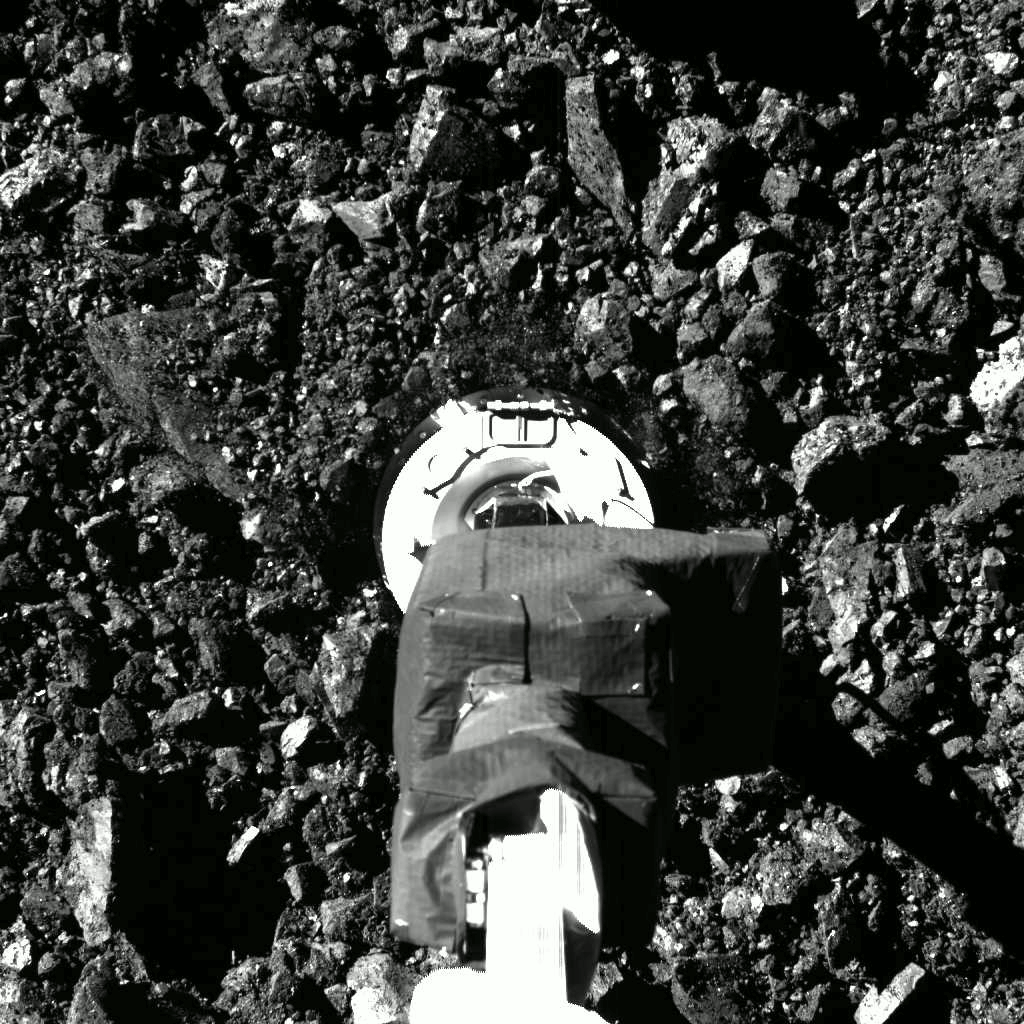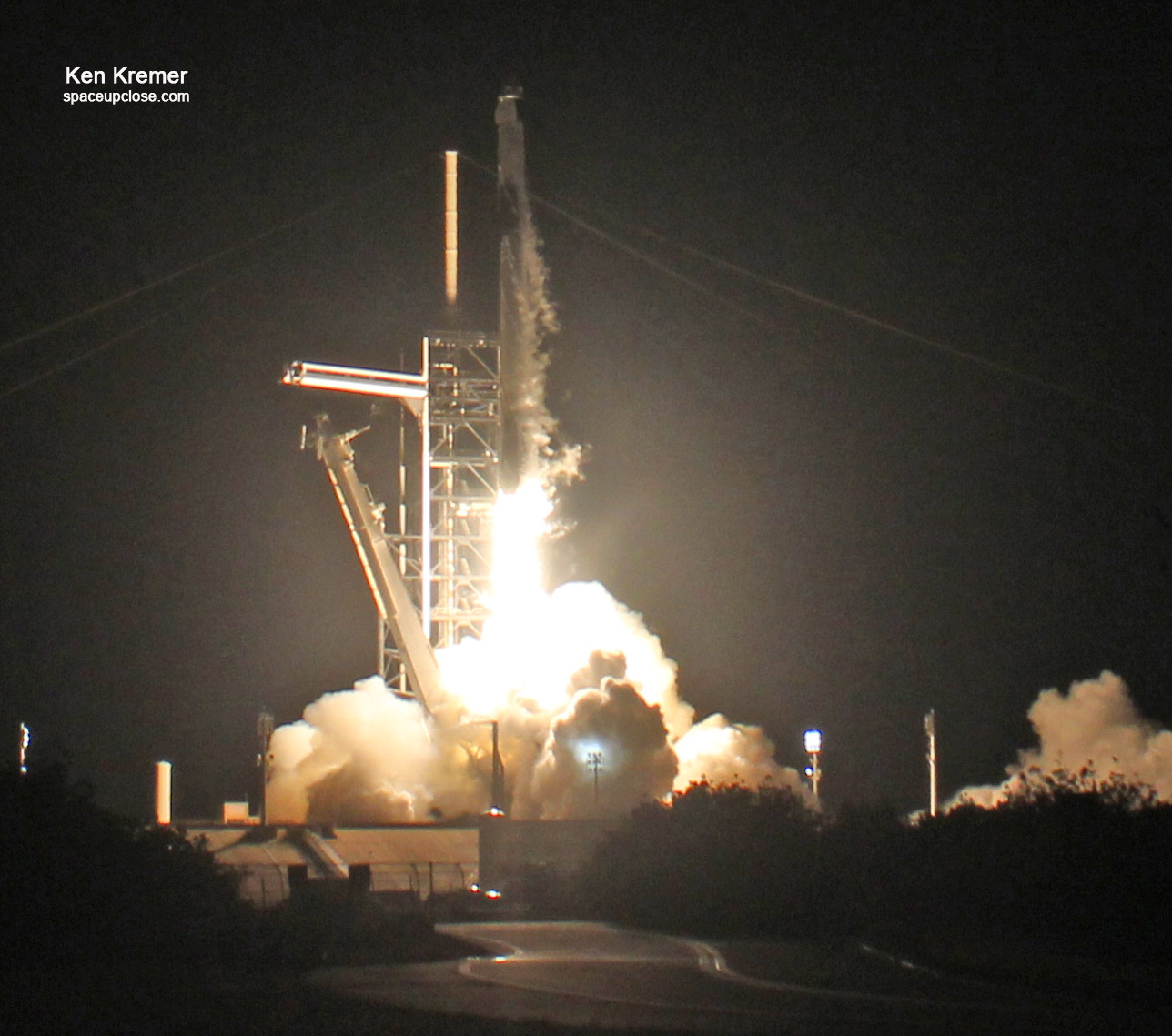
For SpaceUpClose.com & RocketSTEM
CAPE CANAVERAL, FL – NASA’s bold OSIRIS-REx spacecraft has started the complex process to carefully stow the huge stash of asteroidal samples collected from asteroid Bennu last week on Oct. 20 in the sampling head into the sample return capsule for the return trip to Earth.
NASA reported that the OSIRIS-REx mission team commanded the spacecraft to successfully place the spacecraft’s sample collector head into its Sample Return Capsule (SRC) – and released the image shown above to show the progress.
“The first image shows the collector head hovering over the SRC after the Touch-And-Go Sample Acquisition Mechanism (TAGSAM) arm moved it into the proper position for capture. The second image shows the collector head secured onto the capture ring in the SRC. Both images were captured by the StowCam camera,” NASA reported on Oct. 28.
“Today, after the head was seated into the SRC’s capture ring, the spacecraft performed a “backout check,” which commanded the TAGSAM arm to back out of the capsule. This maneuver is designed to tug on the collector head and ensure that the latches – which keep the collector head in place – are well secured. Following the test, the mission team received telemetry confirming that the head is properly secured in the SRC.”
NASA Origins, Spectral Interpretation, Resource Identification, Security, Regolith Explorer (OSIRIS-REx) spacecraft will begin the return trip to Earth next year in 2021.

After a four year journey of over 200 million miles (321 million km) from Earth and two years in orbit the $1 Billion OSIRIS-REx mission touched and sampled Asteroid Bennu for six seconds.
“The OSIRIS-REx spacecraft made a dramatic six-second touch of Bennu on Oct. 20, and video released the next day indicated a significant amount of particles were agitated on Bennu’s surface and collected in the spacecraft’s Touch-And-Go Sample Arm Mechanism collector head. The team has been working since to stow the primordial cargo for return to Earth next year.”

NASA tweeted these animations on Oct. 26 and Oct. 27 showing of the sample head stowage procedure:
“Tomorrow, the OSIRIS-REx mission will begin the process to stow its abundant sample of asteroid Bennu. It’s a few days earlier than originally anticipated, but the team is working hard to make sure we get every bit of Bennu we possibly can,” NASA tweeted.
Tomorrow, the OSIRIS-REx mission will begin the process to stow its abundant sample of asteroid Bennu. It’s a few days earlier than originally anticipated, but the team is working hard to make sure we get every bit of Bennu we possibly can. More details: https://t.co/b7Wnoz219q pic.twitter.com/PXIlkZhnzi
— NASA's OSIRIS-REx (@OSIRISREx) October 26, 2020
“Right on schedule. This morning I started the sample stow procedure and executed the first set of commands sent by my team. Now, I’m sending images and telemetry back to them so they can decide how to proceed with the next step for stowing the sample.”
Right on schedule. This morning I started the sample stow procedure and executed the first set of commands sent by my team. Now, I’m sending images and telemetry back to them so they can decide how to proceed with the next step for stowing the sample. pic.twitter.com/enOZ1Aq7cz
— NASA's OSIRIS-REx (@OSIRISREx) October 27, 2020
But significant work remains before the complex stowage operation is completed very carefully and methodically by the mission team.
Furthermore the sampling head must be disconnected from the pogo stick like TAGSAM robotic arm that the spacecraft used top gather the sample with incredible precision.
“Before the sampler head can be sealed into the SRC, two mechanical parts on the TAGSAM arm must first be disconnected – these are the tube that carried the nitrogen gas to the TAGSAM head during sample collection and the TAGSAM arm itself. Over the next several hours, the mission team will command the spacecraft to cut the tube and separate the collector head from the TAGSAM arm. Once the team confirms these activities have executed as planned, they will command the spacecraft to seal the SRC.”
“StowCam, a color imager, is one of three cameras comprising TAGCAMS (the Touch-and-Go Camera System), which is part of OSIRIS-REx’s guidance, navigation, and control system. TAGCAMS was designed, built and tested by Malin Space Science Systems; Lockheed Martin integrated TAGCAMS to the OSIRIS-REx spacecraft and operates TAGCAMS.”
OSIRIS-Rex counts as NASA’s first mission to visit a near-Earth asteroid, survey the surface, collect a sample and deliver it safely back to Earth.
Watch my commentary at WFTV Ch 9 ABC News Orlando on NASA’s successful OSIRIS-Rex mission landing and sampling at asteroid Bennu featured on Oct 22/23:
Watch Ken’s continuing reports about OSIRIS-REx, Commercial Crew and Artemis and onsite for live reporting of upcoming and recent SpaceX and ULA launches including Demo-2, Starlink, X-37B, Solar Orbiter, Mars 2020 and more at the Kennedy Space Center and Cape Canaveral Space Force Station.
Stay tuned here for Ken’s continuing Earth and Planetary science and human spaceflight news: www.kenkremer.com –www.spaceupclose.com – twitter @ken_kremer – email: ken at kenkremer.com
Dr. Kremer is a research scientist and journalist based in the KSC area, active in outreach and interviewed regularly on TV and radio about space topics.
………….
Ken’s photos are for sale and he is available for lectures and outreach events
Please consider supporting Ken’s work by donating at Patreon:
https://www.patreon.com/kenkremer
x



